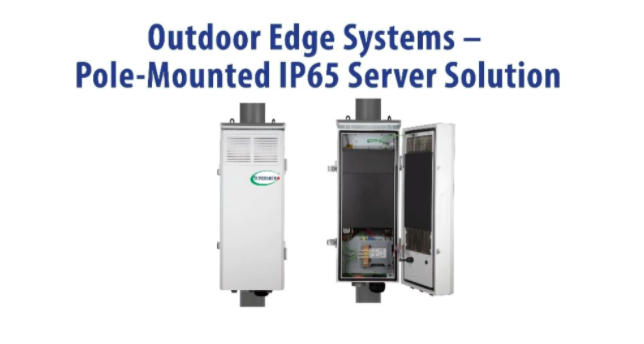Supermicro can power the 5G future with hardware for every application

The era of 5G is coming, and it has the potential to shake up mobile internet connections in a big way. It can enable much faster data speeds for simple tasks from video chat to 4K livestreams, and it can even bring new capabilities to the table from Edge-powered augmented reality to smart infrastructure. But, the move from 4G to 5G isn’t as simple as flipping a switch. 5G networks and Edge computing require high-performance, open-architecture systems. To accommodate this transition, Supermicro is designing the backbone for 5G’s most advanced features.
5G has a simple promise: deliver consumers high-speed data connections with massive bandwidth and low latency. 5G networks transmit vast amounts of information rapidly between devices and servers. Communications can go from one device to another in as little as a millisecond, and data transfers can hit speeds of up to 10 Gbps.

The improvements to speed and latency enhance the experiences already available on 4G LTE, but they also enable entirely new capabilities. Once 5G is commonplace, consumers will be able to stream video games to smartphones with high-quality graphics and negligible latency. Lightweight augmented reality devices will be able to offer a heavyweight experience. 5G networks can also have an impact on infrastructure, with more processing power to handle complex computing like traffic coordination.
Edge and cloud computing hardware is at the heart of all of those applications. Supermicro has various servers designed to fit the many needs along every point of 5G networks. The company has designed servers that are not just incredibly powerful but also highly efficient thanks to their inclusion of Intel® Select Solutions from 2nd Gen Intel® Xeon® Scalable processors to Intel® FPGA cards. Thanks to their efficiency, the servers have a low environmental impact and reduced energy consumption. Supermicro’s servers can also include leading hardware accelerator cards with GPUs for AI inferencing and FPGAs for advanced networking functions.
Supermicro has designed its servers to adapt quickly to the new needs of 5G, with smaller servers that can collectively form massive data centers. Supermicro’s Edge servers can even be built into rugged enclosures, increasing their lifetime in volatile environments. Supermicro has done just this with its customizable Outdoor Edge Systems.

These servers can withstand temperatures from -40℃ to 50℃, making them ideal for harsh environments. When the weather goes to extremes, a built-in, 300W heater and high-efficiency heat exchanger can keep the system up and running. The Outdoor Edge Systems are also protected against water and particles with an IP65 rating. Supermicro has further ensured they are GR-487-CORE and GR-3108-CORE compliant.
This all means that Supermicro’s servers can be deployed directly on 5G cell towers to keep data and processing power as close as possible to end users.
Supermicro’s Outdoor Edge Systems and SuperServers are powerful options for telecom and data center operators. Beyond their rugged design, they offer multiple PCI-E slots to enable GPU and FPGA acceleration or expanded storage capabilities. The promise of 5G is driven forward by Supermicro’s ability to put the hardware necessary for real-time AI inferencing, 5G RAN software, and much more right on the Edge.
As complex as these systems may all sound, Supermicro has refined the process of creating its 5G systems through its Building Block Solutions®. This enables simpler customization of each server to fit customers’ precise needs. So, where one system might be fully loaded with storage to deliver data as quickly as possible to end users, another might fill up the expansion slots with FPGA cards focused on a very specific workload. The 2nd Gen Intel® Xeon® Scalable processors can also flex to meet customers specific performance requirements.

Supermicro’s experience with open hardware and virtualization is uniquely suited to the needs of 5G. This ensures that every customer can find a solution that will flex to fit their needs. Supermicro already has a complete suite of server hardware available, but it’s continuing to work on even more 5G server infrastructure building blocks and solutions.
Its servers can bring storage closer than ever to users, delivering the fastest loading speeds. And, its hardware is ready to push AI forward through Deep Learning in data centers, increasing the capability of AI on its Edge servers. That AI could be tasked with everything from guiding self-driving cars to powering AR glasses, or even enabling advanced sensing devices for first responders.
If you want to prepare for 5G, you only have to look at what Supermicro is building. You can learn more about Supermicro’s 5G solutions here.
Get Tom's Hardware's best news and in-depth reviews, straight to your inbox.